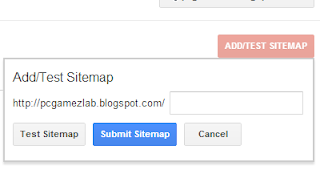Setup Domain From Namecheap In Blogger
So, First of all make sure that you've purchased a domain from Namecheap and You're easily accessing your domain. If you've not purchased then do it now and then follow the simple steps below.
- Go To Blogger >> Settings
- Click on +Add a Custom Domain
- Go To Switch To Advanced Settings
- Now a Box Will Appear Where You Have To Enter The Domain. [i.e : www.yourdomain.com]
- After Entering The Domain, Click "Save" Button and Then You Will See The Error Like The Below Image.
- In The Above Error, They Are Asking To Verify Your Domain. They Have Given Two CName Records Which I've Mentioned in The Above Image, You Have To Add These CName Records In Your Domain in Order To Verify It. Simply Follow Below Steps.
- Open New Tab in Browser and Go To Namecheap
- Login Into Your Account and Go To Manage Domains.
- Open Your Domain There and Go To "All Host Records" From The Left Side Menu.
- Now Here You Have To Create Two CNAME Records.
- In The Second Row, You Can See That First Column (Host Column) is Havingwww, in The Second Column (IP Address/URL Column) Put ghs.google.com,in The Third Column (Record Type Column) Select CNAME(Alias) and SetTTL as 1800.
- Now Come Down at The Sub Domain Settings
- Here In The First Row, Fill First Column With Little Code Which Is Placed Blogger at Left Side Below www, Second Column With Long Code Which Is Below ghs.google.com in Blogger, Choose CNAME(Alias) In The Record Type and The Last Set TTL as 1800.
- Now Make Sure That You've Done Correctly and Also Confirm It By Seeing The Below Image.
- After Adding CNAME Records Carefully Now Save Your Records By Pressing The "Save Settings" Button At The Bottom Of Page.
- Now Open The Blogger Tab and Also Press Save Button There.
- You're Almost Done But One Little Thing Is Remaining Which Redirecting yourdomain.com to www.yourdomain.com. This is Really Important and Not so Difficult.
- Just Refresh The Blogger >> Settings Page and Click "Edit" In Your Domain Setting.
- Now a Check Box Will Appear Like The Image Below, So Just Tick it and Hit "Save" Button.
- CONGRATULATIONS! You Have Successfully Installed Custom Domain In Your Blogger Blog.
- That's All!
From The Editors Desk
So friends, This was our custom Namecheap domain which we've used in our blogger blog today. So I hope that this post will you little bit in installing custom domain. If you are facing any problem then leave your comments below. We'll reply you back upon our review. Stay connected with us for more and also subscribe us to get hot updates. Take care of you and your family. Cheers!







































